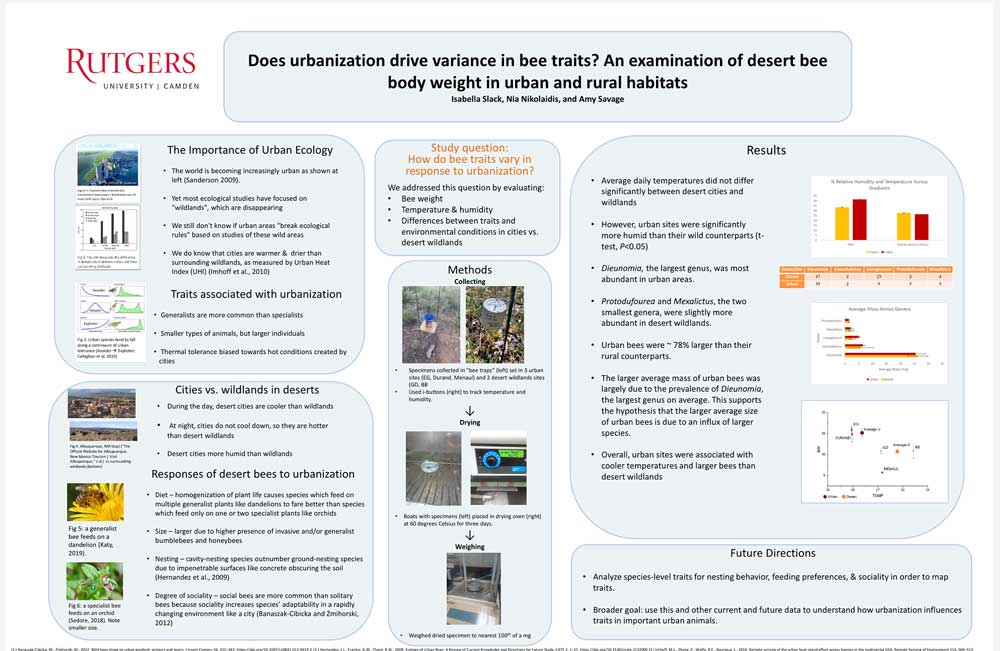Isabella Slack ‘21
Major: Biology
Faculty Mentor: Dr. Amy Savage, Assistant Professor of Biology
Abstract
The inherent differences between urban and rural or wilderness environments have given rise to discrepancies within their respective wildlife. It is now understood that while urban areas operate under different rules and conditions than untouched wilderness, cities are still a type of ecosystem and thus must not be ignored in ecological studies. The life which exists in urban environments is often less diverse than in similar wilderness. In particular, there are disproportionately large numbers of generalist species and relatively little presence of specialist species in cities. This study aims to advance our understanding of the extent of the differences between urban and wilderness life; namely, size and weight discrepancies. Bee specimen samples were collected from several sites – some within Albuquerque, NM, and some in the nearby desert wildlands. The specimens were sorted according to site, genus, and whether they originated from an urban or desert wildlands environment. They were then massed for dry weight. Wing bud distance, and thus body size, was also recorded. The data were analyzed for significant differences within and across genera, as well as between urban and wildlands environments. It was found that, as expected, urban bees were generally larger than their wildlands counterparts when all genera were consolidated. Interestingly, within one genus, the inverse was found to be true. Because generalist bees tend to be larger than specialist bees, these findings support the hypothesis that there are more generalist species present in urban environments.
Preview

